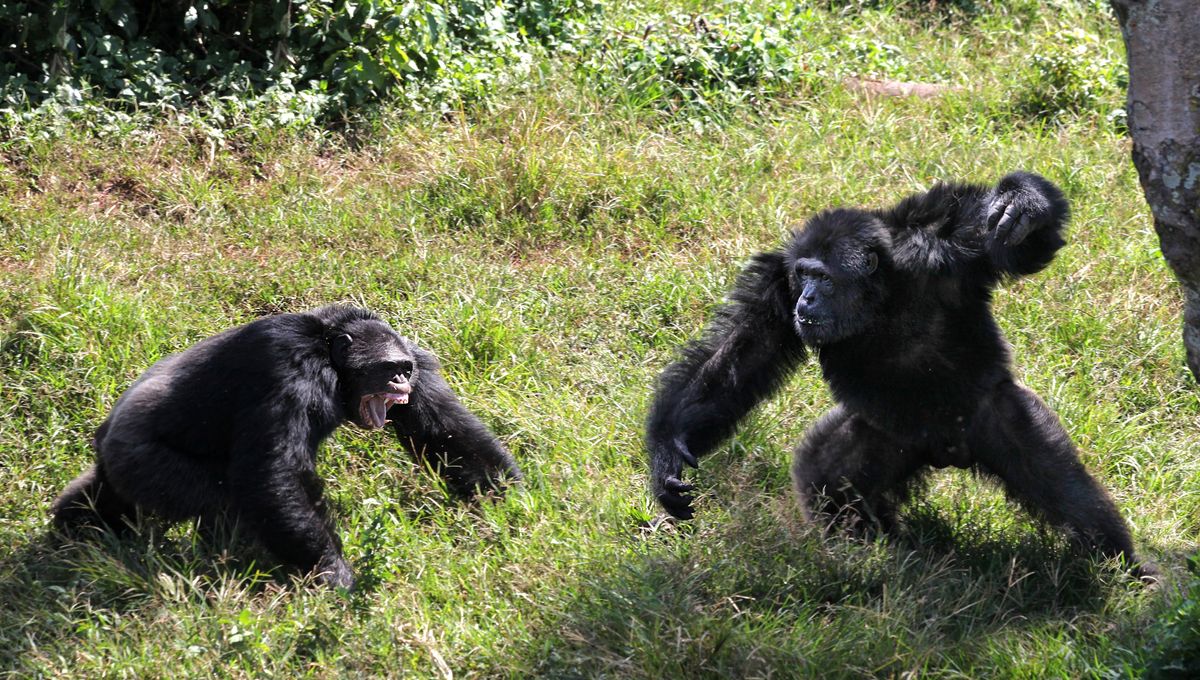
In the forests of West Africa, chimpanzees are engaging in a never-before-seen behavior. To spy on rival gangs, chimps will tactically move to higher ground to get a better view and gather information. They will then use this “reconnaissance intel” to decide their next steps. This is an age-old tactic of human warfare, but a behavior that’s not been reported in chimps before.
The fascinating behavior was documented at the Taï National Park in Côte d’Ivoire during a three-year study by the University of Cambridge and the Max Planck Institute for Evolutionary Anthropology.
The team collected GPS data and over 21,000 hours of tracklogs on two neighboring groups of western chimpanzees, encompassing a total of 58 apes. The territory of these two whoops (that’s the collective noun for chimps, apparently) border each other and they’re often forced to compete for resources, which can erupt into violence.
The researcher’s observations showed that the chimps would regularly perform patrols of the borders to reaffirm their loosely defined territory.
“Patrols are often conducted in subgroups that stay close and limit noise. As an observer, you get a sense that patrolling has begun. They move and stop at the same time, a bit like a hunt,” Dr Sylvain Lemoine, lead study author and a biological anthropologist at the University of Cambridge’s Department of Archaeology, said in a statement.
A common theme of these patrols would involve the chimps traveling up the higher, hillier area when moving towards the border where conflict typically takes place. However, they would tend to avoid these hills when returning to their own territory, opting for the easier and flatter route.
The chimps’ next moves then appeared to be dictated by the information they gathered from the hilltop. After scoping out the rivals, the likelihood of advancing into enemy territory increased from 40 percent when rivals were 500 meters (1,640 feet) away, to 50 percent when 1,000 meters (3,280 feet) away, to 60 percent when 3,000 meters (9,842 feet) away.
The researchers argue this behavior doesn’t just show off the cognitive abilities of our closest living relatives, but it might even highlight the origins of human warfare.
“Tactical warfare is considered a driver of human evolution,” explained Dr Lemoine.
“This chimpanzee behavior requires complex cognitive abilities that help to defend or expand their territories, and would be favored by natural selection,” he added.
“Exploiting the landscape for territorial control is deeply rooted in our evolutionary history. In this use of war-like strategy by chimpanzees we are perhaps seeing traces of the small scale proto-warfare that probably existed in prehistoric hunter-gatherer populations,” Dr Lemoine added.
The new study is published in the journal PLOS Biology.
Source Link: Chimpanzees Seen Using Human Warfare Tactics For The First Time